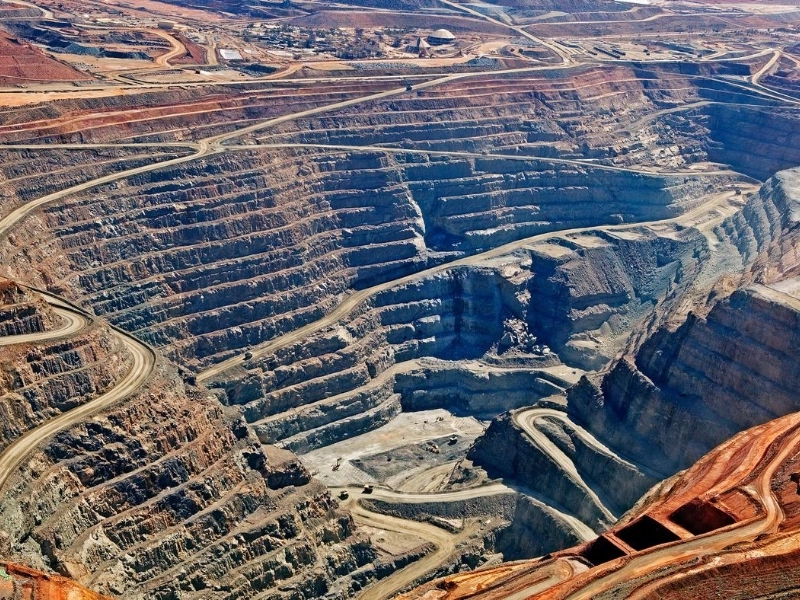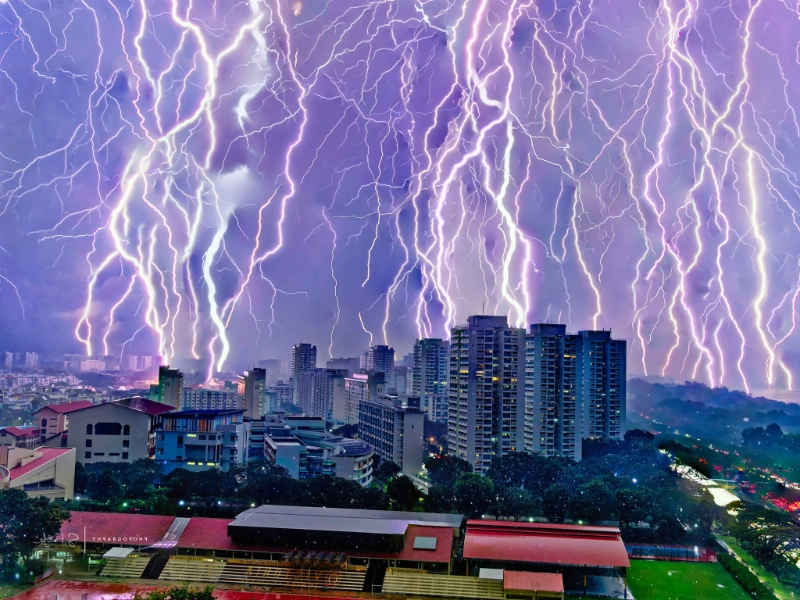Underground Monsters: The Insane Depths of Earth's Deepest Mines Revealed
Advertisement
10. Great Noligwa Gold Mine (South Africa)

Another important deep mining project that has greatly increased the gold output of South Africa is the Great Noligwa Gold Mine situated on the Vaal River. Great Noligwa, with a depth of roughly 2.4 kilometres (1.5 miles), epitomises the mining sector's commitment to investigating depths for gold deposits, therefore reinforcing South Africa's leadership in deep gold mining.
Originally founded in the late 20th century, Great Noligwa has been a mainstay of AngloGold Ashanti's Vaal River activities. Derived from the serpentine form of the gold-bearing reefs in the vicinity, the mine's name—which means "the one with many snakes" in the local tongue—reflects These intricate geological formations have made the development of certain mining methods necessary to effectively extract the valuable metal challenging.
Great Noligwa's mining activities are distinguished by their technical intricacy and advanced technology application. To remove gold-bearing ore from small, high-grade reefs, the mine combines mechanised approaches with traditional mining methods. From the miners, who must negotiate unstable rock conditions at considerable depths, this method demands a high degree of competence and accuracy.
Managing the strong heat and pressure at such depths presents one of Great Noligwa's toughest difficulties. At the bottom of the mine, the virgin rock temperature may be higher than 50°C (122°F), thereby posing possibly dangerous working circumstances. The mine has a sophisticated cooling system that moves chilled water and air around the underground operations to handle this. This technology not only makes the surroundings more pleasant for employees but also helps to prevent heat-related equipment breakdowns that can cause production to be disturbed.
Given the inherent hazards of deep mining, safety is absolutely critical at Great Noligwa. The mine now uses cutting-edge communication networks, emergency refuge chambers, and seismic monitoring systems among other thorough safety measures and technology. Protecting the crew and guaranteeing the mine's continuous running in demanding conditions depend on these steps.
Great Noligwa's ore processing consists in a sequence of difficult processes meant to maximise gold recovery. The ore is moved to the surface following extraction where it is crushed, ground, and subjected to many separation techniques. The mine uses cyanide leaching and gravity concentration to separate gold from the ore. Improving the efficiency of these procedures has become increasingly important in recent years in order to save expenses and lessen environmental effect.
Great Noligwa has influence outside of its daily activities. Providing employment for thousands of people and supporting several auxiliary companies, the mine has been a major job creator in the area. Like many deep-level gold mines in South Africa, Great Noligwa has, however, struggled with growing operational expenses, labour relations, and the necessity of exploring farther to preserve output levels.
Great Noligwa remains a significant component of South Africa's gold mining scene despite these obstacles. The operators of the mine have made investments in exploration and development initiatives meant to extend its operational lifetime and find new areas containing gold. In line with worldwide patterns towards more sustainable mining methods, there have also been initiatives to increase operational efficiency and lower environmental effect.
Great Noligwa leaves behind more than just gold output. Particularly in the fields of deep-level mining methods, rock engineering, and mineral processing, it has been a site of major technological innovation in the mining sector. Other mines all throughout the world have embraced many of the methods and technology created at Great Noligwa, therefore advancing mining science and engineering internationally.
Ultimately, the Great Noligwa Gold Mine is evidence of the extraordinary successes of the South African mining sector, stretching human capacity and technical innovation in the search of gold. Its activities reflect the continuous difficulties and changing character of deep mining in the twenty-first century as well as show the will to harvest priceless resources from the depths of Earth.
Advertisement
Recommended Reading:
9 Amazing Facts About The Blue Lagoon - #6 Will Shock Even Icelanders! →
Stay Updated
Actionable growth insights, once a week. No fluff, no spam—unsubscribe anytime.
Advertisement
You May Like

The Surprising Benefits of Sleeping Next to a Lemon
06/26/2025

Hilarious Award-Winning Wildlife Photos Proving Animals Have a Sense of Humor
08/09/2025

Nature's Perfect Timing: 15 Mind-Blowing Animal Photos You Can't Miss
07/01/2025

The Best Shot Of A Wild Animal You've Never Seen Before
09/03/2025

9 Amazing Facts About The Blue Lagoon - #6 Will Shock Even Icelanders!
07/11/2025

24 Pets Who Are Evolving Into Their Humans
07/29/2025

20 Luxurious Things From Dubai That Made Us Gasp
07/10/2025

10 Unobvious Things to Do as Soon as You Enter Your Hotel Room
07/17/2025

Hair Mistakes That Make Women Look Much Older Than They Are
08/15/2025

Debunking the 8-Glass Rule: What Experts Want You to Know
06/28/2025

Wardrobe Woes: Hilarious Celebrity Outfit Blunders You Can't Unsee
06/12/2025

14 Unique Cat Breeds That You Don’t See Every Day
08/20/2025

Exotic Delights: 12 Perfect Tropical Fruits for Fruit Salads
08/22/2025

Owners Were Shocked! The Amazing Changes After Pet Grooming
06/21/2025

Experience the Thrill of the World's Fastest 10 Cars
07/19/2025

10 Incredible Cities That Have Changed Beyond Recognition
06/06/2025

Watermelon Diet: A Delicious Choice for Summer Weight Loss
08/08/2025

The Strangest Beauty Pageants Through History
06/04/2025

Supercell Thunderstorms: Nature's Ultimate Storm Machine
08/29/2025

16 World-Famous Lightning Landmarks: A Must-Visit Pilgrimage
06/04/2025

25 Hilarious Photos that Show the Funny Side of Women's Tennis
08/07/2025

These Animals Were Born With Very Unique Markings That Set Them Apart
06/12/2025

Glamorous Unions: Memorable Celebrity Wedding Snippets
06/14/2025

What Will Happen to Your Body If You Start Eating 3 Dates Every Day for a Week
07/22/2025
Comments
QuantumFable · 06/27/2025
Crisp separation of concerns.
FrostedNexus · 08/21/2025
This could anchor a mini-course.